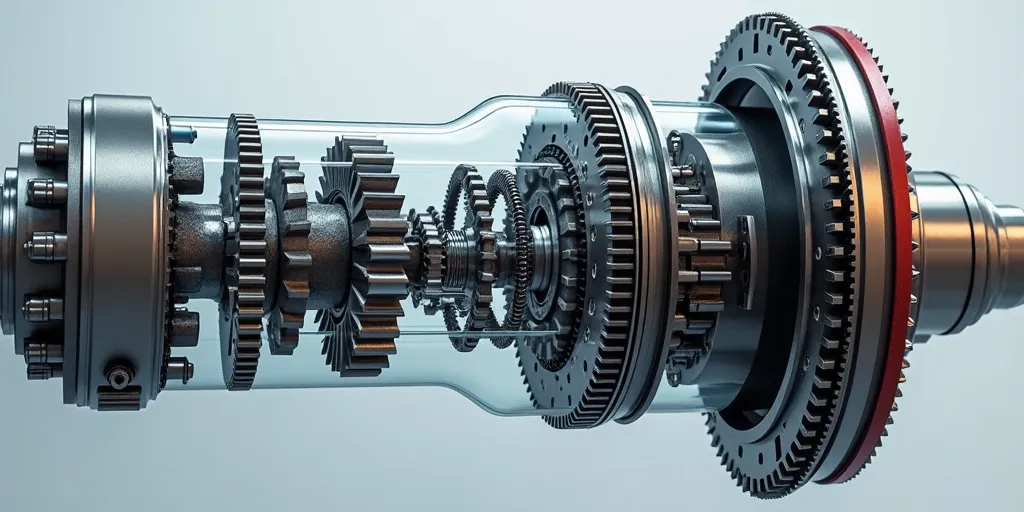-
Shopping Tools
-
Care & Maintenance
-
About
-
Dealer Login

The secondary clutch on your golf cart plays a crucial role in adjusting the drive belt's tension and gear ratio, making sure the cart shifts smoothly based on engine speed.
In golf carts with a Continuously Variable Transmission (CVT), the secondary clutch, also known as the driven clutch, functions like a variable-ratio transmission. It adjusts the tension of the drive belt using centrifugal force and a spring-loaded helix. The clutch shifts between higher and lower gear ratios automatically as the engine speed increases, ensuring the engine runs efficiently while driving. This system eliminates the need for manual gear shifting, offering smooth acceleration and deceleration for the driver. In this article, we’ll dive into the components of the secondary clutch, how they work, and how to tell if it’s failing, as well as the difference between the primary and secondary clutches.
The secondary clutch is a critical part of the CVT system. It consists of several components that work together to adjust the drive belt's position and the overall gear ratio of the cart. Here are the key components of the secondary clutch:
The movable sheave is a part of the secondary clutch that moves in and out, controlled by centrifugal force. When the golf cart’s engine idles, the sheave remains close to its starting position. As the engine speed increases, centrifugal force pushes the sheave outward, increasing the diameter of the pulley system. This change in diameter allows the drive belt to move to a larger diameter, effectively shifting the cart into a higher gear ratio, which increases the cart’s speed.
The fixed sheave is the stationary component of the secondary clutch. It stays in place and works with the movable sheave to maintain the tension on the drive belt. As the movable sheave moves outward, the drive belt shifts between the two sheaves, and the fixed sheave helps determine the final gear ratio and performance of the cart.
The spring in the secondary clutch works in tandem with the movable sheave. At idle, the spring keeps the sheave compressed, ensuring that the drive belt stays high on the sheave’s smaller diameter, effectively keeping the gear ratio low. As engine RPMs increase, centrifugal force overcomes the spring's resistance, allowing the movable sheave to expand and the belt to move to a larger diameter, changing the gear ratio. This spring mechanism ensures the clutch works smoothly under varying loads.
The helix is a spring-loaded component that helps control the movement of the movable sheave. It plays an important role in adjusting the rate at which the clutch shifts. The helix's design and tension determine how fast or slow the shift occurs as the engine RPMs rise. The spring-loaded tension of the helix works to control the rate of clutch engagement, making the shift smoother or more abrupt depending on the golf cart’s performance needs.
Like any mechanical component, the secondary clutch can experience wear and tear over time. Here are some signs that your secondary clutch may be failing:
The primary and secondary clutches both play important roles in the CVT system of a golf cart, but they serve different functions:
The primary clutch is attached to the engine and is responsible for controlling the transfer of power from the engine to the drive system. As the engine revs up, the primary clutch engages and transmits power to the drive belt. It uses centrifugal force to adjust the clutch's engagement, allowing the engine to operate at higher speeds without excessive strain. The primary clutch works in conjunction with the secondary clutch to adjust the overall speed and torque of the golf cart.
The secondary clutch, as mentioned earlier, works with the primary clutch to adjust the gear ratio, ensuring that the cart can accelerate smoothly while also achieving the necessary speed. It is responsible for adjusting the drive belt's tension and diameter as the engine speed increases, allowing the cart to shift into higher gears as needed.
In simple terms, the primary clutch is responsible for transferring power from the engine to the drive system, while the secondary clutch is responsible for adjusting the gear ratio and ensuring smooth shifts during operation. Both clutches must work in tandem to ensure the golf cart runs efficiently and smoothly.
The secondary clutch plays a crucial role in ensuring your golf cart accelerates smoothly and efficiently. By adjusting the gear ratio through centrifugal force and spring-loaded components, it helps your cart shift seamlessly through various speeds. If you experience issues such as slipping, reduced top speed, or strange noises, it may be time to inspect your secondary clutch. Regular maintenance of both the primary and secondary clutches is essential for keeping your golf cart running at peak performance.
